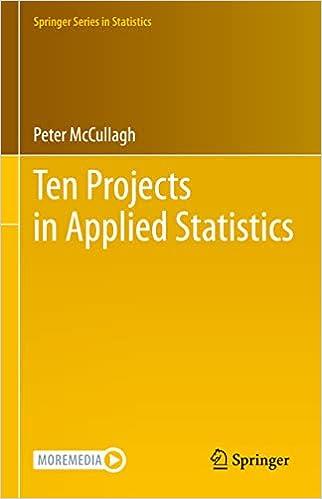Include the inverse-square frequency as an additional covariate in the exponential model for the power spectrum. In
Question:
Include the inverse-square frequency as an additional covariate in the exponential model for the power spectrum. In principle, this means re-computing \(\hat{\lambda}\). Compute the Wilks statistic, which is the reduction in deviance or twice the increase in log likelihood. Also compute on the Wald statistic, which is the squared ratio of the \(\omega^{-2}\)-coefficient to its standard error as given by the inverse Fisher information matrix. Recall that the dispersion parameter is one, which is not the default in summary (). Standard asymptotic theory for large sample sizes tells us that the difference between these two statistics is \(o_{p}(1)\), i.e., that the difference tends to zero as \(n ightarrow \infty\), and also that the null distribution is \(\chi_{1}^{2}\) for both. In this setting the sample size is the number of non-seasonal frequencies. Comment on any discrepancy between theory and practice in this instance, and provide an explanation.
Step by Step Answer:






